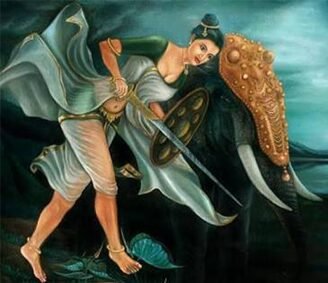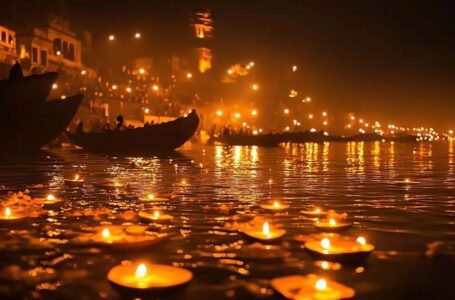The Rich History and Cultural Significance of Lucknow Kathak Gharana

Lucknow Gharana is a prominent style of classical Indian dance known as Kathak. It originated in the city of Lucknow in the northern Indian state of Uttar Pradesh and is known for its graceful movements, intricate footwork, and expressive facial expressions. Kathak dance is a blend of Hindu and Muslim cultures, with influences from the Mughal era.
The Lucknow Gharana has a rich history and cultural significance, with roots that trace back to the royal courts of the 18th century. It is characterized by its emphasis on storytelling, often using hand gestures known as mudras to convey the meaning of the story being told through dance.
In this blog, we will explore the history, techniques, and cultural significance of the Lucknow Gharana, and how it has evolved over time to become one of the most celebrated forms of Indian classical dance. We will also examine some of the key figures and performances that have contributed to its enduring legacy, and going impact on modern Indian dance.

ORIGIN OF LUCKNOW GHARANA
The Lucknow Gharana has its origins in the northern Indian city of Lucknow, which was once the seat of the Nawabs of Awadh. The Nawabs were Muslim rulers who were known for their patronage of the arts, and their court was a hub of cultural activity in the 18th and 19th centuries.
It was in this setting that the Lucknow Gharana began to take shape. Kathak dance, which forms the basis of the Lucknow Gharana, has its roots in the temples of northern India, where it was performed as a form of devotional dance. However, with the arrival of the Mughal Empire in the 16th century, Kathak began to evolve and incorporate elements of Persian and Islamic culture.
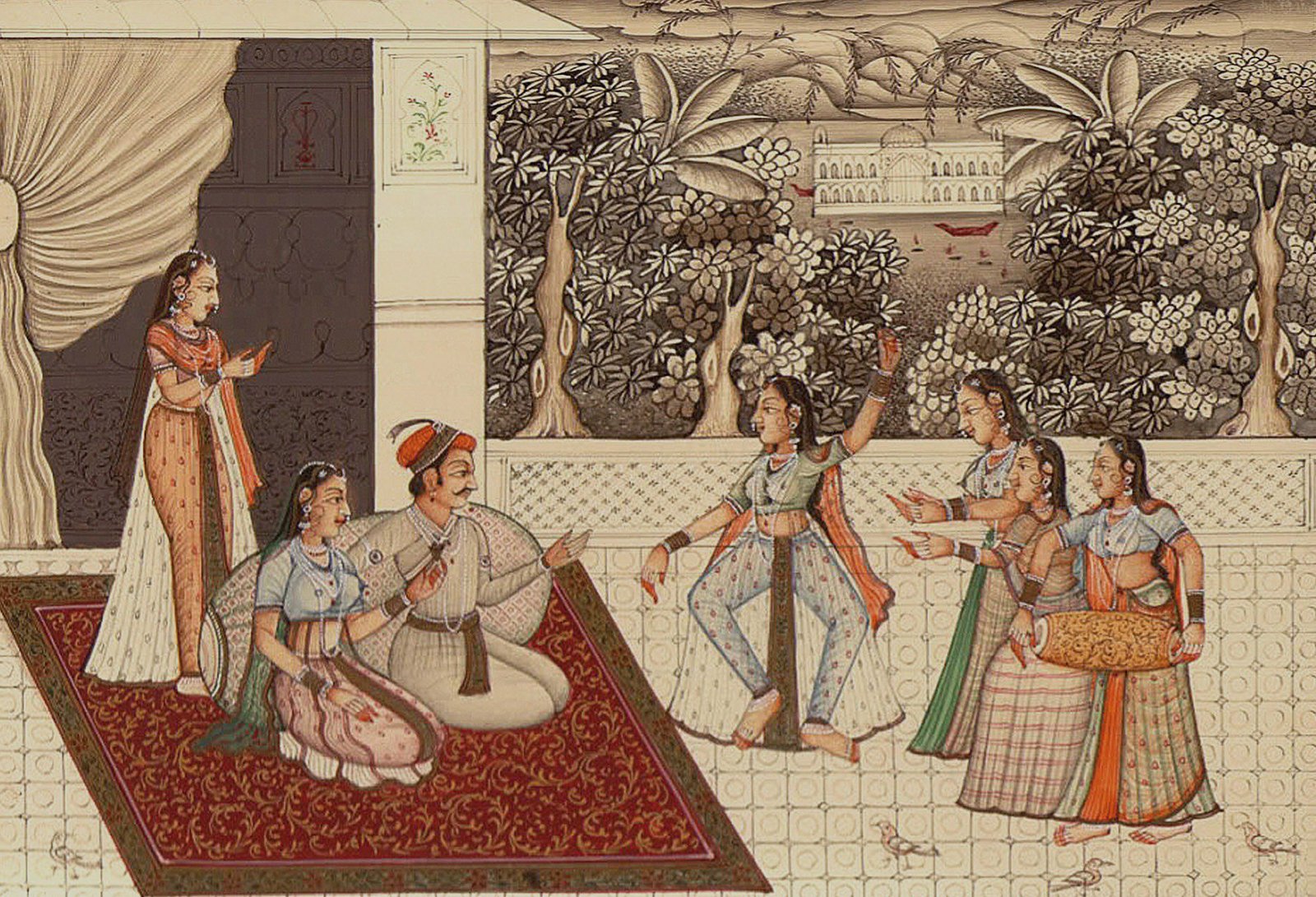
Under the patronage of the Nawabs of Awadh, Kathak continued to evolve and refine, with Lucknow emerging as a centre of excellence for the dance form. The Lucknow Gharana is characterized by its emphasis on storytelling, with dancers using intricate footwork, hand gestures are known as mudras, and expressive facial expressions to convey the meaning of the story being told through dance.
Over time, the Lucknow Gharana has evolved and adapted to changing cultural and social contexts, but it remains a celebrated and influential style of Indian classical dance, with a rich history and cultural significance.
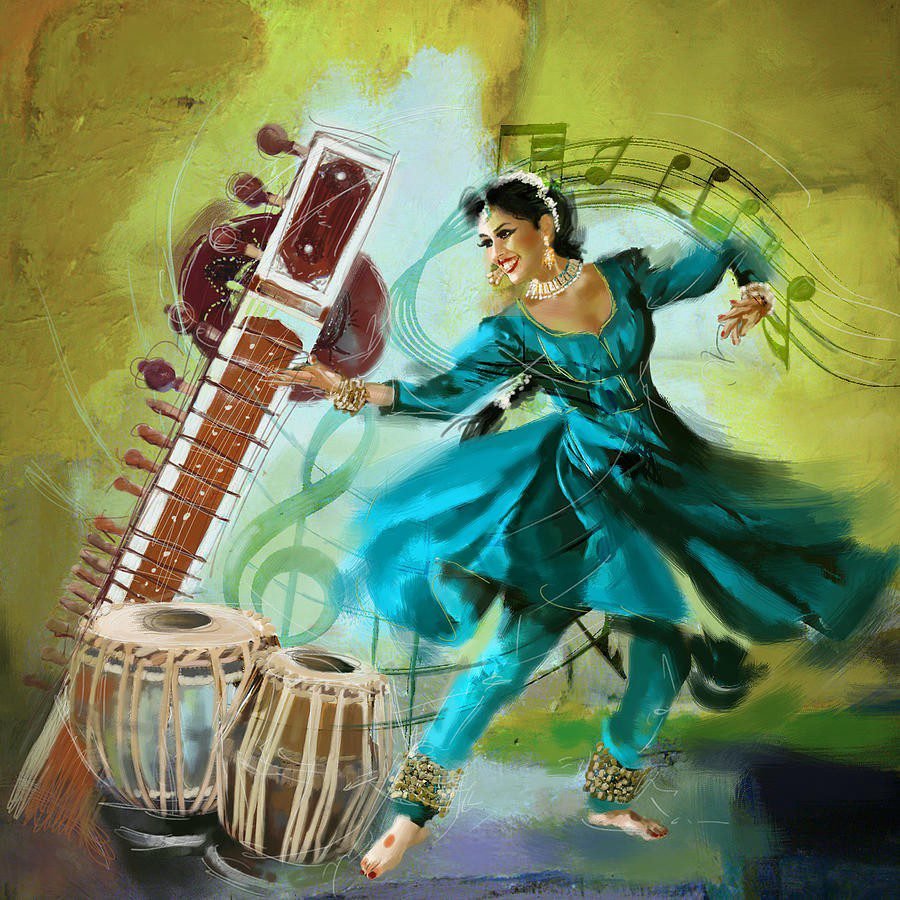
LEADER OF LUCKNOW GHARANA
The Lucknow Gharana of Kathak dance has been led by many prominent artists and teachers over the years. Here are some of the most influential figures associated with the Lucknow Gharana:
- Thakur Prasad: Thakur Prasad is considered to be one of the founding fathers of the Lucknow Gharana. He was a court dancer for the Nawab of Awadh in the 19th century and is credited with helping to refine and codify the style of Kathak dance that would come to be associated with the Gharana.
- Bindadin Maharaj: Bindadin Maharaj was a prominent Kathak dancer and teacher in the early 20th century, and is widely regarded as one of the most influential figures in the development of the Lucknow Gharana. He was a disciple of Thakur Prasad and trained many of the Gharana’s most famous dancers, including Shambhu Maharaj and Birju Maharaj.
- Shambhu Maharaj: Shambhu Maharaj was a leading Kathak dancer of the mid-20th century, and was one of the foremost exponents of the Lucknow Gharana. He was a disciple of Bindadin Maharaj and was known for his virtuosic footwork, improvisational skills, and deep understanding of the music and rhythms of Kathak.
- Birju Maharaj: Birju Maharaj is one of the most famous and influential Kathak dancers of all time, and is a leading exponent of the Lucknow Gharana. He is the grandson of Bindadin Maharaj and has trained many of today’s top Kathak dancers. Birju Maharaj has also choreographed numerous productions and has worked extensively in film and television.
- Kumudini Lakhia: Kumudini Lakhia is a contemporary dancer and choreographer who has played a key role in reviving interest in the Lucknow Gharana. She was a student of Shambhu Maharaj and has developed a unique style of dance that blends elements of the Gharana with modern sensibilities. Lakhia has also trained many of today’s top Kathak dancers and has founded several dance schools and institutions.

TYPES OF LUCKNOW GHARANA
There are several types of Lucknow Gharana within the broader genre of Kathak dance:
- Thaat: Thaat is the foundational style of the Lucknow Gharana, and is characterized by slow and graceful movements that emphasize the beauty and elegance of Kathak dance. Thaat movements are typically performed in a stationary position and emphasize the use of the hands, eyes, and facial expressions.
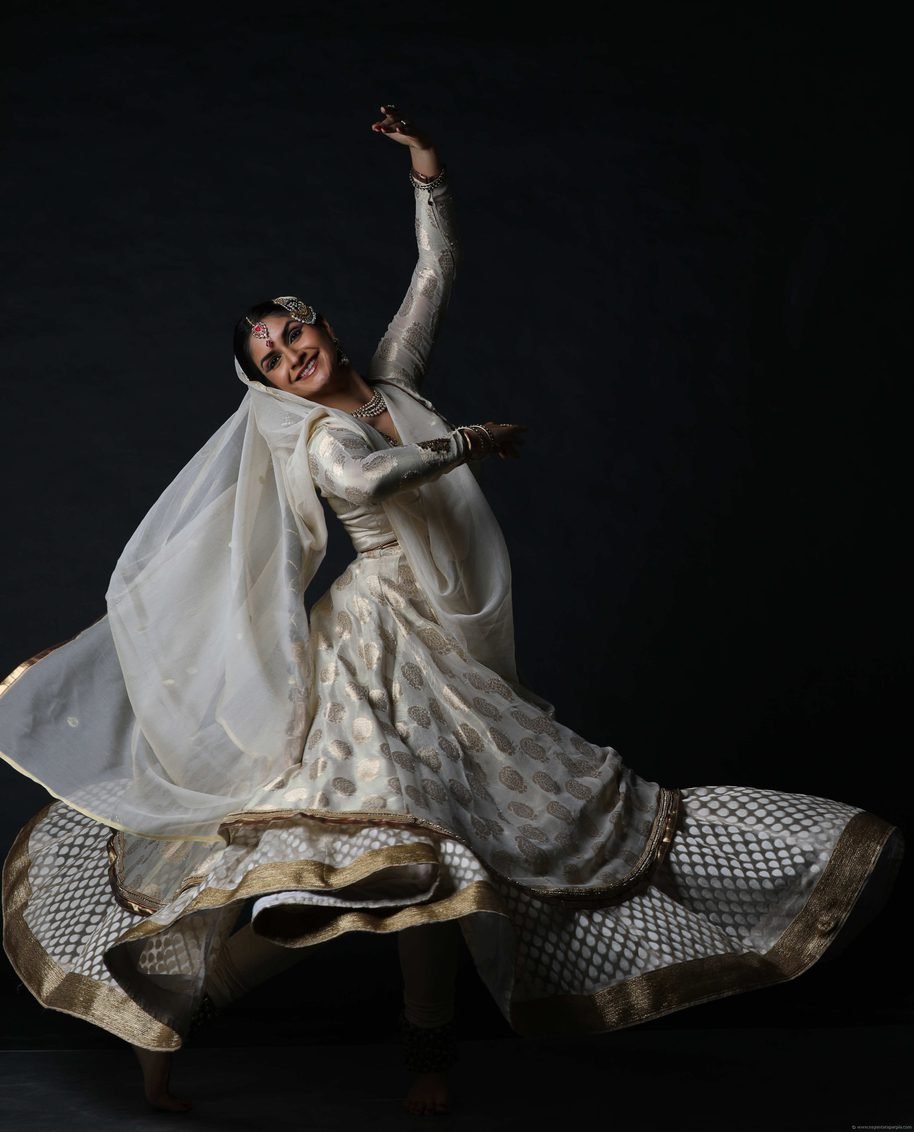
- Tukda: Tukda is a more complex and fast-paced style of Kathak dance that emphasizes intricate footwork and improvisation. Tukda movements are typically performed in a standing position, and involve a series of quick and precise steps and turns.
- Paran: Paran is a rhythmic and percussive style of Kathak dance that emphasizes the use of footwork and rhythm. Paran movements are typically performed in a stationary position, and involve a series of complex and syncopated rhythms that are often improvised on the spot.
- Gat bhav: Gat bhav is a storytelling style of Kathak dance that emphasizes the use of facial expressions and gestures to convey emotions and tell stories. Gat bhav movements are typically performed in a standing position, and involve a series of fluid and expressive movements that are coordinated with the music and lyrics of the performance.

- Chakkar: Chakkar is a Kathak dance spinning style involving rapid and precise turns. Chakkar movements are typically performed in a stationary position, and involve a series of quick and precise turns that are synchronized with the music and rhythm of the performance. Chakkar movements require a high degree of technical skill and control, and are often used to demonstrate the virtuosity and expertise of the dancer.
FEATURES OF LUCKNOW GHARANA
The Lucknow Gharana of Kathak dance is known for its unique features and characteristics that distinguish it from other styles of Kathak. Here are some of the key features of the Lucknow Gharana:
- Graceful and fluid movements: The Lucknow Gharana is known for its graceful and fluid movements, which are characterized by an emphasis on elegance and beauty. Dancers in the Lucknow Gharana often use slow and smooth movements to express emotions and tell stories.
- Emphasis on improvisation: The Lucknow Gharana places a strong emphasis on improvisation, with dancers often creating new movements and sequences on the spot. This improvisational approach allows for a high degree of creativity and spontaneity in the performance.

- Complex footwork: The Lucknow Gharana is renowned for its complex footwork, which is characterized by intricate and precise movements. Dancers in the Lucknow Gharana often use a variety of rhythmic patterns and accents to create a dynamic and engaging performance.
- Use of facial expressions: The Lucknow Gharana places a strong emphasis on the use of facial expressions to convey emotions and tell stories. Dancers in the Lucknow Gharana often use subtle changes in their facial expressions to convey a wide range of emotions and moods.
- Synchronization with music: The Lucknow Gharana is known for its close synchronization with music, with dancers often using the music as a guide for their movements. Dancers in the Lucknow Gharana are known for their ability to seamlessly blend their movements with the music, creating a dynamic and engaging performance that is both visually and musically stunning.
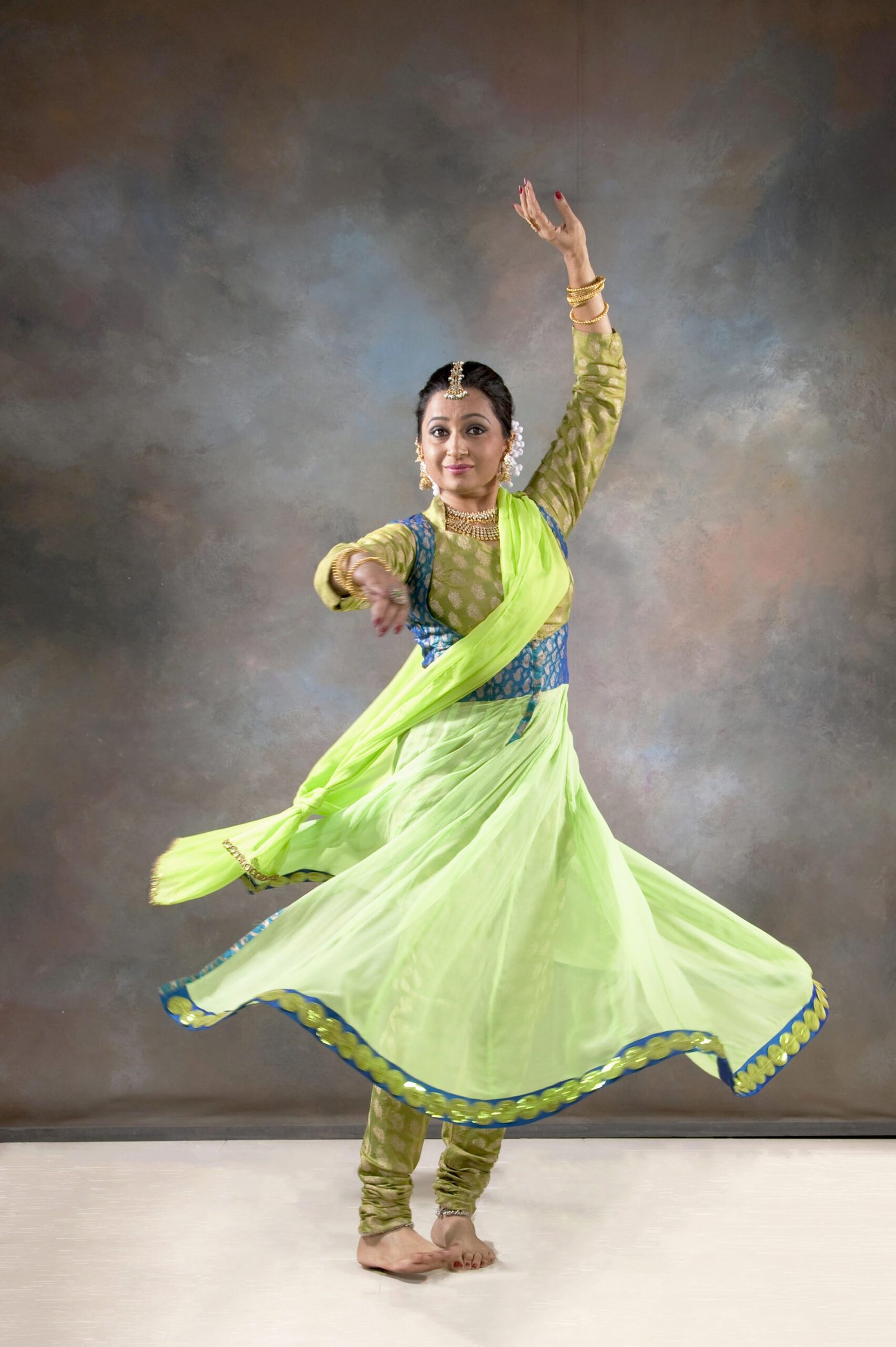
FAMOUS ARTIST OF LUCKNOW GHARANA
There has been many famous artists associated with the Lucknow Gharana of Kathak dance over the years. Here are some notable names:
- Birju Maharaj: Pandit Birju Maharaj is one of the most famous Kathak dancers of all time, and is a leading exponent of the Lucknow Gharana. He has won numerous awards for his contributions to Indian classical dance, including the Padma Vibhushan, the second-highest civilian award in India.

- Shambhu Maharaj: Shambhu Maharaj was another prominent Kathak dancer of the Lucknow Gharana, and was a disciple of Birju Maharaj’s grandfather, Bindadin Maharaj. He was known for his virtuosic footwork and improvisational skills.
- Sitara Devi: Sitara Devi was a legendary Kathak dancer who was associated with both the Lucknow and Jaipur Gharanas. She was known for her grace, expressiveness, and versatility, and was one of the first Kathak dancers to achieve international acclaim.
- Kumudini Lakhia: Kumudini Lakhia is a contemporary dancer and choreographer who has been instrumental in reviving interest in the Lucknow Gharana. She has won numerous awards for her contributions to Indian classical dance, and is the founder of the Kadamb Center for Dance and Music in Ahmedabad, India.
- Saswati Sen: Saswati Sen is another leading Kathak dancer associated with the Lucknow Gharana, and is known for her technical virtuosity and expressive abilities. She has performed extensively in India and abroad, and has won several awards for her contributions to the art form.
CURRENT SCENARIO
Lucknow Gharana of Kathak dance is a traditional art form that has been passed down through generations and continues to be cand performed by artists around the world. In recent years, there has been a renewed interest in traditional Indian dance forms, including Kathak, and many young artists are studying and performing the Lucknow Gharana style. Additionally, there have been efforts to promote and preserve traditional Indian dance forms through cultural festivals, competitions, and workshops, which have helped to keep the Lucknow Gharana and other styles of Kathak dance relevant and vibrant in today’s world.

CONCLUSION
In conclusion, the Lucknow Gharana of Kathak dance is a rich and vibrant tradition that has evolved over centuries, blending elements of Persian, Hindu, and Mughal cultures. The Lucknow Gharana is known for its graceful and fluid movements, complex footwork, use of facial expressions, improvisation, and synchronization with music. The gharana has produced several renowned artists and has contributed significantly to the development and evolution of Kathak dance. The tradition continues to be practised and celebrated today, with many young artists studying and performing the style both in India and around the world. The preservation and promotion of traditional Indian dance forms, including the Lucknow Gharana, remain important in preserving cultural heritage and promoting diversity and inclusivity in the arts.
